The rise of electric mobility has paved the way for innovative vehicles that cater to a variety of needs, and Kia is at the forefront with its latest models: the Kia EV3 and the Kia EV6. Both SUVs are poised to impress, but how do they stack up against one another? This article delves into the technical aspects, performance figures, and innovations of each model to help you make an informed decision.
Kia EV3 vs Kia EV6 – Differences & prices compared
Design and Dimensions
Starting with design, both the Kia EV3 and EV6 share a similar SUV silhouette, but they cater to different aesthetic preferences. The EV3 is more compact, measuring 4,300 mm in length and 1,850 mm in width, while the EV6 has a larger footprint at 4,695 mm in length and up to 1,890 mm in width.
Despite being smaller, the EV3 manages to provide ample space with a trunk capacity of 460 liters, whereas the EV6 offers a slightly larger storage solution at 490 liters. Both models can comfortably seat five passengers, making them practical choices for families and adventurers alike.
Powertrain and Performance
When it comes to power, the Kia EV3 offers a range of power options with a maximum output of 204 HP, supported by a torque of 283 Nm. Conversely, the EV6 boasts a wider selection with power ratings ranging from 170 HP to a staggering 325 HP in its top configuration. Torque figures for the EV6 can go as high as 605 Nm, suggesting superior acceleration and performance capabilities, especially in the AWD variant.
In terms of acceleration, the EV3's 0-100 km/h times range from 7.5 to 7.9 seconds depending on the battery option. On the other hand, the EV6, with its robust performance lineup, can dash from 0-100 km/h in as little as 5.3 seconds, highlighting its sporty edge.
Battery and Range
The battery options also paint an interesting picture. The Kia EV3 is available with two battery sizes: 58.3 kWh and 81.4 kWh, allowing an electric range from 436 km to 605 km. The EV6 similarly offers two choices, 63 kWh and 84 kWh batteries, with ranges from 428 km to 582 km. While both vehicles present competitive ranges, the EV3 has a slight advantage with its larger battery option.
Energy consumption also varies slightly, with the EV3 showing an impressive efficiency of around 14.9 to 16.2 kWh/100 km, while the EV6's consumption rates hover between 15.9 and 17 kWh/100 km, depending on the configuration.
Innovative Features
Both vehicles are rich in technology and innovation, featuring state-of-the-art infotainment systems and safety features. However, the EV6 pulls ahead slightly with options for advanced driver-assistance technologies, including Highway Driving Assist and Remote Smart Parking Assist, providing a futuristic driving experience.
Additionally, the EV6 is equipped with vehicle-to-load (V2L) technology, enabling it to serve as a power source for external devices, a feature that offers unmatched convenience for outdoor enthusiasts and urban users alike.
Conclusion
Choosing between the Kia EV3 and EV6 ultimately boils down to your specific needs and preferences. The EV3 stands out for its impressive range and efficiency in a compact form, providing an ideal option for city dwellers. Meanwhile, the EV6 offers more power, advanced features, and a sporty driving experience that may appeal to performance-oriented buyers.
Both models exemplify Kia’s commitment to electric mobility and innovation, making them strong contenders in the ever-evolving automotive landscape. Whichever model you choose, you'll undoubtedly be investing in a vehicle that's ahead of the curve, reinforcing Kia's text commitment to sustainability and modern technology.
Here’s where it gets real: The technical differences in detail
Costs and Efficiency:
Price and efficiency are often the first things buyers look at. Here it becomes clear which model has the long-term edge – whether at the pump, the plug, or in purchase price.
Kia EV3 has a distinct advantage in terms of price – it starts at 30800 £, while the Kia EV6 costs 38600 £. That’s a price difference of around 7714 £.
In terms of energy consumption, the advantage goes to the Kia EV3: with 14.90 kWh per 100 km, it’s slight more efficient than the Kia EV6 with 15.90 kWh. That’s a difference of about 1 kWh.
As for range, the Kia EV3 performs slight better – achieving up to 605 km, about 23 km more than the Kia EV6.
Engine and Performance:
Under the bonnet, it becomes clear which model is tuned for sportiness and which one takes the lead when you hit the accelerator.
When it comes to engine power, the Kia EV6 has a significantly edge – offering 609 HP compared to 204 HP. That’s roughly 405 HP more horsepower.
In acceleration from 0 to 100 km/h, the Kia EV6 is decisively quicker – completing the sprint in 3.50 s, while the Kia EV3 takes 7.50 s. That’s about 4 s faster.
In terms of top speed, the Kia EV6 performs evident better – reaching 260 km/h, while the Kia EV3 tops out at 170 km/h. The difference is around 90 km/h.
There’s also a difference in torque: Kia EV6 pulls decisively stronger with 770 Nm compared to 283 Nm. That’s about 487 Nm difference.
Space and Everyday Use:
Cabin size, boot volume and payload all play a role in everyday practicality. Here, comfort and flexibility make the difference.
Both vehicles offer seating for 5 people.
In curb weight, Kia EV3 is hardly perceptible lighter – 1800 kg compared to 1955 kg. The difference is around 155 kg.
In terms of boot space, the Kia EV6 offers slight more room – 490 L compared to 460 L. That’s a difference of about 30 L.
In maximum load capacity, the Kia EV6 performs barely noticeable better – up to 1290 L, which is about 39 L more than the Kia EV3.
When it comes to payload, Kia EV3 hardly perceptible takes the win – 470 kg compared to 450 kg. That’s a difference of about 20 kg.
Who wins the race?
The Kia EV6 proves to be outperforms in nearly all aspects and therefore becomes our DriveDuel Champion!
Kia EV6 is the better all-rounder in this comparison.
Costs and Consumption
View detailed analysis
Engine and Performance
View detailed analysis
Dimensions and Body
View detailed analysis
 @ Kia Corporation
@ Kia Corporation
Kia EV6
Kia EV3
The Kia EV3 arrives as a cheeky, practical electric compact that manages to feel both premium and playful, delivering crisp handling and a roomy cabin that's perfect for urban life. With smart tech, friendly styling and sensible pricing, the EV3 is the kind of car that makes switching to electric feel like a no-brainer without asking you to give anything important up.
details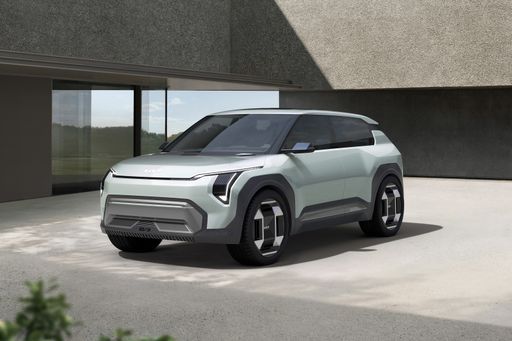 @ Kia Corporation
@ Kia Corporation
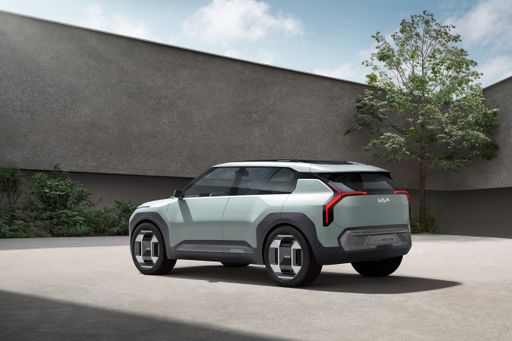 @ Kia Corporation
@ Kia Corporation
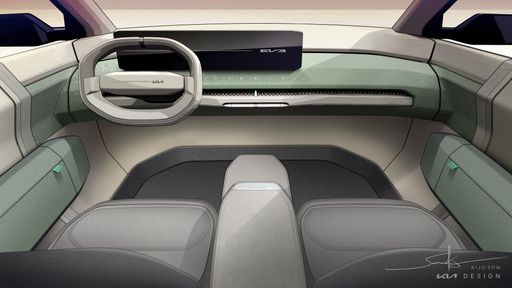 @ Kia Corporation
@ Kia Corporation
Kia EV6
The Kia EV6 looks like it sprinted off a concept stage, its bold, futuristic lines wrapping a surprisingly spacious and grown-up cabin. On the road it delivers crisp, immediate thrust and composed handling, with enough everyday practicality and slick tech to make ditching petrol feel like an upgrade rather than a compromise.
details @ Kia Corporation
@ Kia Corporation
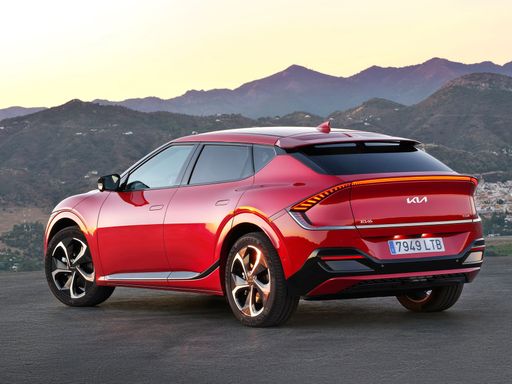 @ Kia Corporation
@ Kia Corporation
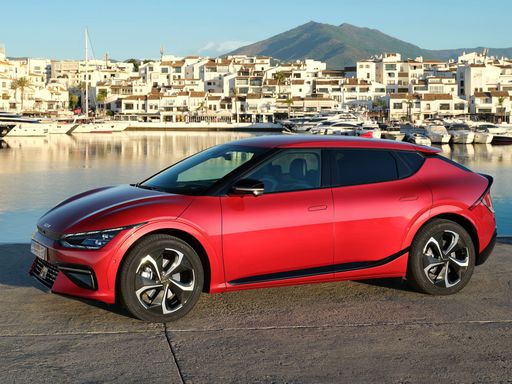 @ Kia Corporation
@ Kia Corporation
 @ Kia Corporation
@ Kia Corporation
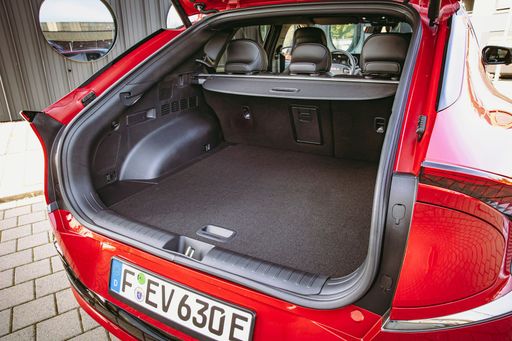 @ Kia Corporation
@ Kia Corporation
 @ Kia Corporation
@ Kia Corporation
|
 @ Kia Corporation
@ Kia Corporation
|
|
|
|
Costs and Consumption |
|
|---|---|
|
Price
30800 - 41700 £
|
Price
38600 - 60000 £
|
|
Consumption L/100km
-
|
Consumption L/100km
-
|
|
Consumption kWh/100km
14.9 - 16.2 kWh
|
Consumption kWh/100km
15.9 - 20.9 kWh
|
|
Electric Range
436 - 605 km
|
Electric Range
428 - 582 km
|
|
Battery Capacity
58.3 - 81.4 kWh
|
Battery Capacity
63 - 84 kWh
|
|
co2
0 g/km
|
co2
0 g/km
|
|
Fuel tank capacity
-
|
Fuel tank capacity
-
|
Dimensions and Body |
|
|---|---|
|
Body Type
SUV
|
Body Type
SUV
|
|
Seats
5
|
Seats
5
|
|
Doors
5
|
Doors
5
|
|
Curb weight
1800 - 1885 kg
|
Curb weight
1955 - 2220 kg
|
|
Trunk capacity
460 L
|
Trunk capacity
480 - 490 L
|
|
Length
4300 - 4310 mm
|
Length
4695 mm
|
|
Width
1850 mm
|
Width
1880 - 1890 mm
|
|
Height
1560 - 1570 mm
|
Height
1545 - 1550 mm
|
|
Max trunk capacity
1251 L
|
Max trunk capacity
1250 - 1290 L
|
|
Payload
470 kg
|
Payload
440 - 450 kg
|
Engine and Performance |
|
|---|---|
|
Engine Type
Electric
|
Engine Type
Electric
|
|
Transmission
Automatic
|
Transmission
Automatic
|
|
Transmission Detail
Reduction Gearbox
|
Transmission Detail
Reduction Gearbox
|
|
Drive Type
Front-Wheel Drive
|
Drive Type
Rear-Wheel Drive, All-Wheel Drive
|
|
Power HP
204 HP
|
Power HP
170 - 609 HP
|
|
Acceleration 0-100km/h
7.5 - 7.9 s
|
Acceleration 0-100km/h
3.5 - 8.7 s
|
|
Max Speed
170 km/h
|
Max Speed
185 - 260 km/h
|
|
Torque
283 Nm
|
Torque
350 - 770 Nm
|
|
Number of Cylinders
-
|
Number of Cylinders
-
|
|
Power kW
150 kW
|
Power kW
125 - 448 kW
|
|
Engine capacity
-
|
Engine capacity
-
|
General |
|
|---|---|
|
Model Year
2024
|
Model Year
2024 - 2025
|
|
CO2 Efficiency Class
A
|
CO2 Efficiency Class
A
|
|
Brand
Kia
|
Brand
Kia
|
What drive types are available for the Kia EV3?
The Kia EV3 is offered with Front-Wheel Drive.
The prices and data displayed are estimates based on German list prices and may vary by country. This information is not legally binding.
